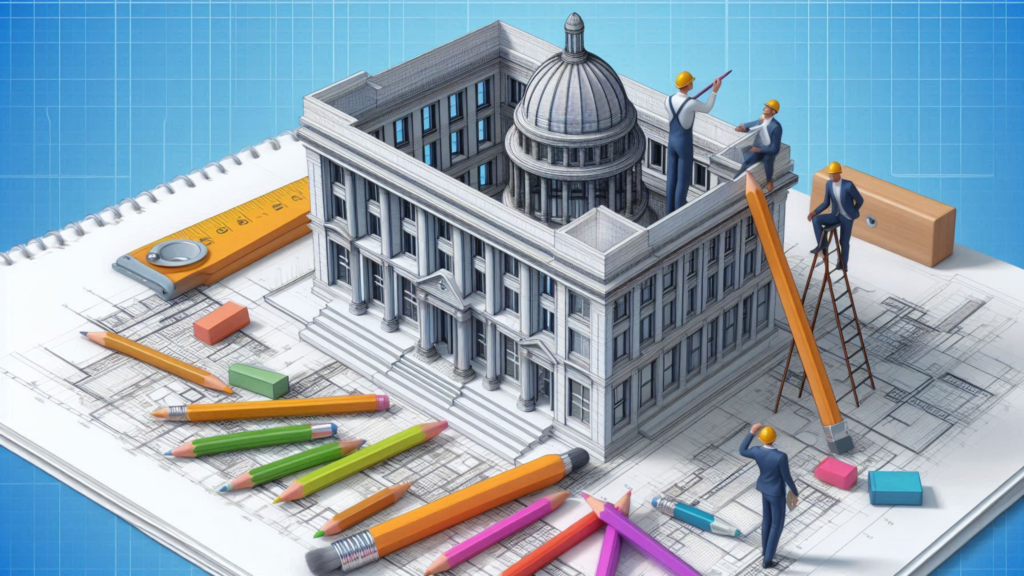
Introduction About Tekla Structures
Tekla Structures is a powerful Building Information Modeling (BIM) software specifically designed for the architecture, engineering, and construction (AEC) industries. Its importance lies in its ability to create detailed and accurate 3D models of structures, facilitating improved design, collaboration, and project management. As the AEC sector continues to evolve, professionals require advanced tools to enhance their productivity and ensure seamless communication among project stakeholders. Tekla Structures plays a vital role in this landscape by enabling users to develop complex structural designs that are both efficient and cost-effective. This software is essential for modern AEC professionals committed to achieving high-quality project outcomes through effective collaboration and innovative design solutions.
Software Capabilities
Tekla Structures is equipped with a comprehensive suite of features designed to enhance structural design and project management. Its primary capabilities include:
- 3D Modeling: Tekla Structures allows users to create highly detailed and accurate 3D models of structures, including steel and concrete components. This feature supports enhanced visualization and aids in identifying potential design clashes early in the process.
- Integrated Project Management: The software includes tools for managing project timelines, resources, and workflows, helping teams to stay organized and aligned throughout the project lifecycle.
- Collaboration Tools: Tekla Structures facilitates real-time collaboration among team members, allowing multiple users to work on the same model simultaneously. This capability enhances communication and accelerates decision-making.
- Customizable Reports and Documentation: Users can generate detailed reports and documentation directly from the model, ensuring that all stakeholders have access to current information, such as quantities and specifications.
- BIM Integration: Tekla Structures seamlessly integrates with various BIM tools, allowing for effective collaboration with architects, engineers, and contractors, thereby streamlining the overall project workflow.
- Cloud-Based Access: As a cloud-enabled solution, Tekla Structures ensures that project data is secure and accessible from any location, empowering users to manage projects efficiently whether in the office or on-site.
These features make Tekla Structures indispensable for promoting effective communication and coordination in complex construction projects.
What Can Tekla Structures Do?
Tekla Structures offers a powerful suite of features designed to enhance structural design and project management within the architecture, engineering, and construction (AEC) industries. It provides tools that streamline workflows and improve communication among project stakeholders.

- Advanced 3D Modeling: Tekla Structures enables users to create highly detailed and accurate 3D models of complex structures, including steel and concrete components. This feature enhances visualization and helps identify design conflicts early in the project.
- Integrated Project Management: The software includes tools for managing project timelines, resources, and workflows. This integration allows teams to stay organized and aligned throughout the project lifecycle, ultimately enhancing efficiency.
- Collaboration Tools: Tekla Structures facilitates real-time collaboration among team members, allowing multiple users to work on the same model simultaneously. This capability improves communication and accelerates decision-making processes.
- Automated Reports and Documentation: Users can generate detailed reports and construction documentation directly from the model, ensuring all stakeholders have access to the most current information, such as quantities, specifications, and drawings.
- BIM Compatibility: Tekla Structures seamlessly integrates with various BIM tools, enabling effective collaboration with architects, engineers, and contractors. This functionality supports streamlined project workflows and better coordination among stakeholders.
- Cloud-Based Access: As a cloud-enabled solution, Tekla Structures ensures that project data is secure and accessible from any location. This mobile access empowers users to manage projects effectively, whether they are in the office or on-site.
Tekla Structures’ combination of advanced modeling, project management, and collaboration tools makes it an essential platform for professionals aiming to improve project outcomes and efficiency in the AEC sector.
Why Choose Tekla Structures?
Selecting the right structural design software can significantly influence project outcomes. Here are compelling reasons to adopt Tekla Structures:
- Precision and Detail: Tekla Structures provides unparalleled precision in modeling, enabling the creation of highly detailed structural components that meet industry standards and client expectations.
- Enhanced Collaboration: With real-time access to project data and collaboration tools, teams can work together seamlessly, leading to better-informed decisions and improved project outcomes.
- Adaptability: Tekla Structures is designed to accommodate various types of structures and materials, making it a versatile choice for professionals across different sectors within the AEC industry.
- Comprehensive Support and Training: Tekla Structures offers extensive support resources, including training materials and a dedicated user community, to help users maximize their productivity and expertise.
The collaborative features and integration capabilities of Tekla Structures make it a preferred choice for industry professionals seeking to enhance project efficiency and quality.
Comparison of Tekla Structures with Competitors:
| Features | Tekla Structures | Autodesk Revit | SAP2000 |
| Focus | Structural design | Architectural modeling | Structural analysis |
| User Base | Structural engineers | Architects, engineers | Civil and structural engineers |
| Learning Curve | Moderate | Moderate to High | High |
| Pricing | Competitive subscription | Subscription-based | Perpetual licensing |
| File Compatibility | Supports multiple formats | Primarily proprietary | Limited |
| Customization | Highly customizable | Moderate customization | Limited customization |
| Integrated Issue Tracking | Yes | Yes | No |
| Real-Time Collaboration | Yes | Limited | No |
Key Skills Gained from Tekla Structures
Learning Tekla Structures not only equips users with technical knowledge but also cultivates essential collaborative skills:
- Collaboration Skills: By engaging in real-time discussions and feedback, users learn how to communicate effectively with diverse team members, fostering a collaborative culture that is vital for project success.
- BIM Proficiency: Mastering Tekla Structures enhances your ability to navigate BIM workflows, a crucial skill for AEC professionals as the industry increasingly relies on digital models for planning and execution.
- Structural Analysis Understanding: Gaining expertise in Tekla Structures allows users to better understand structural behavior, enabling them to make informed design decisions and optimize structural integrity.
The mastery of Tekla Structures cultivates both technical and soft skills essential for success in today’s collaborative work environments.
Career Opportunities After Learning Tekla Structures
Mastering Tekla Structures opens up a diverse range of career opportunities within the architecture, engineering, and construction (AEC) industries. The skills acquired through this software can lead to various roles, each with unique responsibilities and potential for career growth. Here are some key roles to consider:

- BIM Modeler
As a BIM Modeler, you will create detailed 3D models of structural components using Tekla Structures. You will collaborate with architects and engineers to ensure accuracy and compliance with design specifications. This role is crucial for producing high-quality models that facilitate construction planning and coordination.
a) Industries: Construction firms, engineering consultancies, architectural firms.
b) Career Path: Progress to roles such as BIM Coordinator or Senior BIM Manager. - Structural Engineer
In the role of a Structural Engineer, you will use Tekla Structures to design and analyze structural systems, ensuring they meet safety and performance standards. You will collaborate with other engineers and stakeholders to develop solutions that address complex design challenges. Strong analytical and problem-solving skills are essential for this position.
a) Industries: Engineering firms, construction companies, government agencies.
b) Career Path: Advancement to lead engineer or project manager roles. - Project Manager
As a Project Manager, you will oversee project timelines, budgets, and resources while utilizing Tekla Structures to manage coordination among stakeholders. Your responsibilities will include ensuring that projects are completed on time and within budget. Effective leadership and communication skills are vital in this role.
a) Industries: Construction companies, project management firms, real estate developers.
b) Career Path: Advancement to senior project management or executive roles, such as Director of Operations. - Construction Manager
In this position, you will be responsible for managing on-site construction activities, ensuring adherence to project specifications and schedules. You will utilize Tekla Structures to visualize project progress and address any issues that arise during construction. Strong leadership and organizational skills are necessary for success in this role.
a) Industries: General contractors, construction management firms.
b) Career Path: Move into senior management roles or specialized positions such as Construction Operations Manager. - Technical Support Specialist
As a Technical Support Specialist, you will provide training and troubleshooting assistance to teams using Tekla Structures. This role requires a strong understanding of the software and excellent communication skills to help users maximize its capabilities. You may also create instructional materials and conduct workshops.
a) Industries: Software firms, AEC consultancies, corporate training providers.
b) Career Path: Advancement to roles such as Technical Account Manager or Product Specialist. - Detailer
In the role of a Detailer, you will produce detailed drawings and documentation for fabrication and construction based on Tekla Structures models. This position requires attention to detail and strong technical skills to ensure accuracy in all drawings and specifications.
a) Industries: Fabrication shops, construction companies, engineering firms.
b) Career Path: Potential to move into senior detailing roles or management positions within detailing teams. - BIM Consultant
A BIM Consultant provides expertise to organizations seeking to implement or enhance their BIM processes using Tekla Structures. You will assess existing workflows, recommend best practices, and train teams on effectively using the software to improve project outcomes.
a) Industries: Consulting firms, construction companies, architectural and engineering firms.
b) Career Path: Advancement to senior consultancy roles or starting your own consultancy practice. - 3D Visualization Specialist
As a 3D Visualization Specialist, you will create compelling visual representations of structural designs using Tekla Structures. Your work will help communicate design concepts effectively to clients and stakeholders, making strong visualization skills crucial for success.
a) Industries: Architectural firms, marketing agencies, real estate development companies.
b) Career Path: Potential to move into senior design roles or specialize in virtual reality (VR) applications in construction.
By pursuing any of these career opportunities, you can leverage your Tekla Structures expertise to become a valuable asset in the AEC sector, contributing to innovative project delivery and effective collaboration among diverse teams.
Salary Expectations for Career Opportunities After Learning Tekla Structures
Understanding salary expectations for different roles in the AEC industry can provide insight into the potential financial benefits of mastering Tekla Structures. Below is a comparative table showcasing estimated annual salaries for various positions in different regions:

| Role | India (INR) | Singapore (SGD) | USA (USD) | UK (GBP) | UAE (AED) |
| BIM Modeler | 600,000 – 1,200,000 | 45,000 – 75,000 | 60,000 – 90,000 | 35,000 – 50,000 | 120,000 – 180,000 |
| Structural Engineer | 800,000 – 1,500,000 | 55,000 – 90,000 | 70,000 – 100,000 | 50,000 – 70,000 | 140,000 – 200,000 |
| Project Manager | 700,000 – 1,400,000 | 50,000 – 85,000 | 75,000 – 110,000 | 45,000 – 65,000 | 130,000 – 190,000 |
| Construction Manager | 500,000 – 1,000,000 | 40,000 – 65,000 | 65,000 – 95,000 | 30,000 – 45,000 | 110,000 – 160,000 |
| Technical Support Specialist | 300,000 – 600,000 | 30,000 – 50,000 | 50,000 – 70,000 | 25,000 – 35,000 | 90,000 – 130,000 |
| 3D Visualization Specialist | 400,000 – 800,000 | 35,000 – 55,000 | 55,000 – 80,000 | 28,000 – 40,000 | 100,000 – 150,000 |
| BIM Consultant | 600,000 – 1,200,000 | 45,000 – 75,000 | 60,000 – 90,000 | 35,000 – 50,000 | 120,000 – 180,000 |
By leveraging your Tekla Structures skills, you can explore diverse roles in the AEC industry, each offering the potential for a rewarding career and competitive salary.
Where Can You Learn Tekla Structures?
To master Tekla Structures, you can find several valid courses and certifications across various platforms. Here are some options to consider:
- Tekla Campus: Offers a wealth of resources, including tutorials, guides, and practice projects specifically designed to help users learn Tekla Structures effectively. It provides an engaging environment for both beginners and advanced users.
- YouTube Tutorials: Numerous channels provide free video tutorials that cover a range of topics, from basic modeling techniques to advanced features in Tekla Structures. These resources can be beneficial for visual learners.
- Online Learning Platforms:
- Udemy: Features a variety of courses on Tekla Structures, catering to different skill levels and roles within the AEC industry. Courses often include practical exercises and downloadable resources.
- LinkedIn Learning: Offers professional courses focused on real-world applications of Tekla Structures, helping users gain practical skills applicable to their jobs.
- Webinars and Workshops: Many industry events and webinars hosted by Tekla experts offer valuable insights and hands-on experiences. These sessions often focus on the latest features and best practices.
How to Get a Job After Learning Tekla Structures?
What job search strategies can help you enter the job market after learning Tekla Structures? Consider these effective tips:

- Build a Strong Portfolio:
- Showcase your projects, highlighting how you utilized Tekla Structures for modeling, detailing, and project management.
- Include examples of completed models, drawings, and any resolved issues through the software.
- Target Relevant Job Roles:
- Focus on positions that require knowledge of BIM workflows and structural modeling tools, such as BIM Modeler or Structural Engineer.
- Gain Industry-Specific Knowledge:
- Familiarize yourself with AEC industry standards, building codes, and structural engineering practices to enhance your employability.
- Enhance Your Tekla Skills:
- Explore advanced features of Tekla Structures and seek certification to validate your expertise, making you stand out in job applications.
- Network with Industry Professionals:
- Join relevant LinkedIn groups, attend industry seminars, and participate in forums related to Tekla Structures to expand your professional network.
- Tailor Your Resume and Cover Letter:
- Highlight your Tekla Structures expertise, relevant projects, and any specific accomplishments in your applications.
- Look for Internships or Freelance Work:
- Gain practical experience through internships or freelance projects to bolster your resume and improve your skills.
- Explore Job Boards:
- Utilize job portals like Indeed, Glassdoor, and LinkedIn to find opportunities specifically looking for Tekla Structures skills.
- Prepare for Interviews:
- Be ready to discuss your Tekla Structures projects and demonstrate your skills through practical examples during interviews.
Future and Trends

The future of Tekla Structures looks promising, with trends leaning towards greater integration of AI-driven features, enhanced collaboration tools, and further BIM integration. As the AEC industry continues to evolve, Tekla Structures will remain pivotal in improving workflows, increasing accuracy, and facilitating real-time collaboration on complex projects. The incorporation of augmented reality (AR) and virtual reality (VR) features is also expected to revolutionize how stakeholders visualize and interact with their designs, providing even more immersive experiences.
Conclusion
Mastering Tekla Structures is crucial for staying competitive in the ever-evolving AEC landscape. With a growing demand for professionals skilled in structural modeling and BIM, learning Tekla Structures can lead to diverse career opportunities across multiple industries. By equipping yourself with Tekla expertise, you position yourself at the forefront of innovative project delivery methods in the AEC sector.

